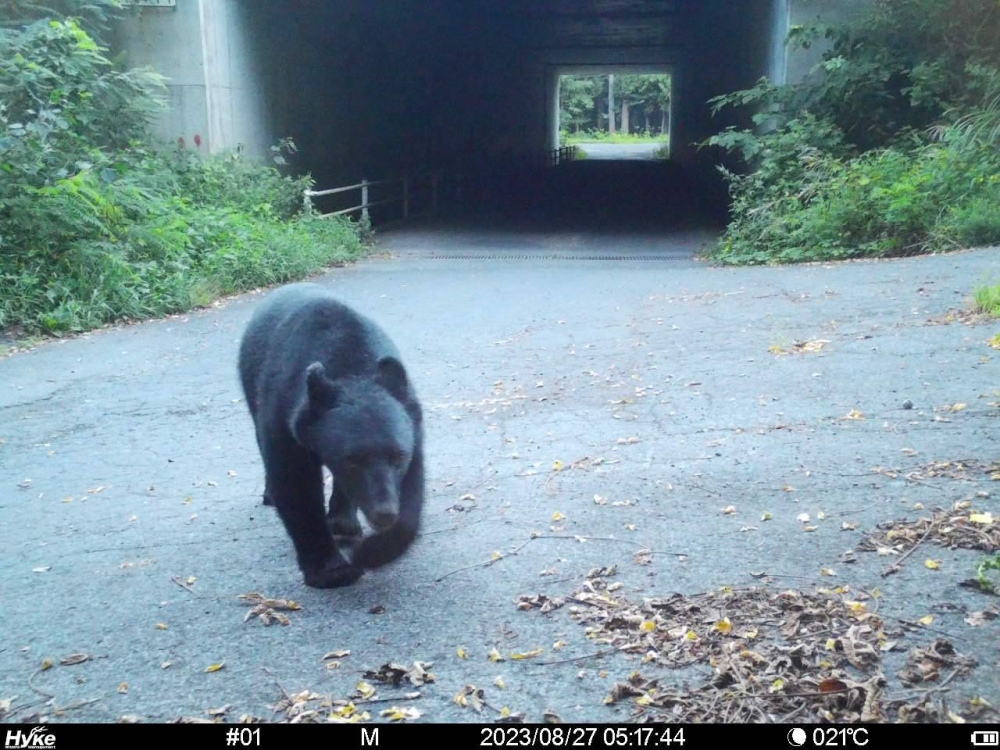 |
| A pair of scimitar-horned oryx |
The oryx, with its striking and seemingly handsome looks, is one of the most charismatic animals in the world. Its bold facial markings and a pair of long sweeping horns give it an almost mythological appearance. The horns are so parallel to each other that when viewed sideways, the animal appears as though it has only one. This description has associated the oryx with the unicorn. Unfortunately, the oryx's stunning appearance has also made it a target for hunters and poachers, and no species bore more brunt than the scimitar-horned oryx. Named for its long sweeping horns reminiscent of actual swords used by Islamic warriors of bygone days, the scimitar-horned oryx had suffered tremendously in the hands of humans for decades with factors ranging from hunting and poaching to habitat degredation in its Sahara homeland. It is also said that political instability and civil war in Chad contributed to its downfall. The combination of various anthropogenic factors resulted in the extirpation of the scimitar-horned oryx throughout North Africa, with only surviving populations residing in zoos, private menageries, and captive-breeding facilities. There were even fenced-in herds residing in a handful of protected areas in North Africa. Due to the abundance of captive populations and lack of data in the form of sightings in the wild, the scimitar-horned oryx had been declared "Extinct in the Wild" by the IUCN since 2000.
 |
| Scimiter-horned oryx being released in the wilds of Chad. |
However, there were ongoing conservation efforts to revive this species in the wild. These efforts comprised of breeding programs designed to increase the numbers of these antelopes in captivity and reintroduce them in their former haunts. They were carried out through joint collaborations between zoos, conservation groups, government agencies, and other key partners. One of the key success stories occurred in 2016 when a group of 25 oryxes were released in Chad's Ouadi Rime-Ouadi Achim Game Reserve as part of an operation led by the country's Ministry of Environment and Fisheries, the Sahara Conservation Fund (SCF), and Environment Agency Abu Dhabi (EAD). That same herd produced a calf the following year marking the first wild birth for more than two decades. From then on, more oryxes were being reintroduced into the reserve and in 2021, sixty calves were born increasing the number to 400 animals. Recently, it has been reported that 510 calves have been born in the wild thanks to a breeding scheme by EAD and the Zoological Society of London (ZSL). Not only has this renewed hope for the oryx's future, but it also changed its status from "Extinct in the Wild" to "Endangered."
 |
| A mother scimitar-horned oryx and calf. |
I cannot think of any greater news than the scimitar-horned oryx being downlisted to "Endangered" from "Extinct in the Wild." This is truly a result of several years of joint collaboration between partners in conservation and politics to save a species from the brink of extinction. What struck me is that prior to this recent achievement, scientists from the ZSL published a research study in the journal Science which asserted that conservation zoos had the potential to alter the extinction of some animals. The research was the first to comprehensively analyze the 95 Extinct in the Wild animals and plants that have survived due to consistant human care since 1950. One of those animals is the scimitar-horned oryx. This magnificent antelope has become the second member of its species after its Arabian counterpart to make a remarkable comeback into the wilds of its arid North African haven. I very much hope that more efforts will be implemented to identify potential protected areas outside of Chad for the scimitar-horned oryx where it once thrived before disappearing. These include Sudan, Niger, Mali, Burkina Faso, Mauritania, Senegal, Western Sahara, Morocco, Algeria, Tunisia, Libya, and Egypt. I also hope that because some of these countries are rife with political instability and terrorism-related activities, considerate and effective actions will be taken to ensure that reintroduction efforts are carried out successfully and that the animals are fully protected. The scimitar-horned oryx shared its North African homeland with two other antelopes, the addax and the dama gazelle; both of which are critically endangered and kept in zoos and captive breeding facilities outside Africa. All three of these antelopes play an integral part in maintaining the North African landscape by grazing and browsing, which prevents desertification. Therefore, their reintroductions are crucial nature-based solutions in helping tackle local impacts of climate change.


.jpg/1920px-Debrigarh_Wildlife_sanctuary_(38509512300).jpg)












